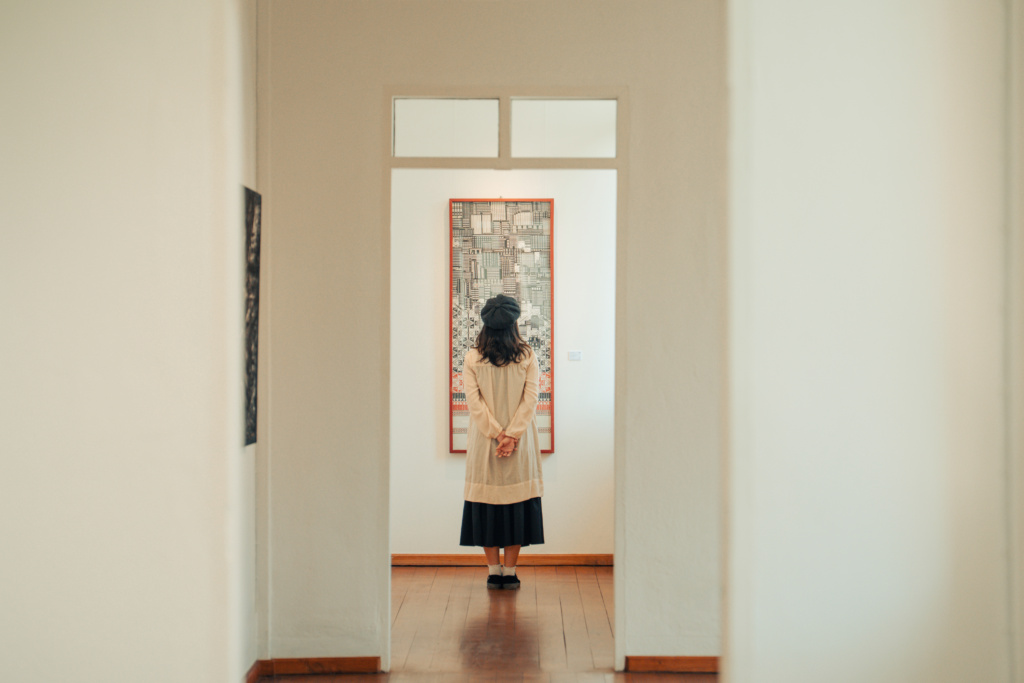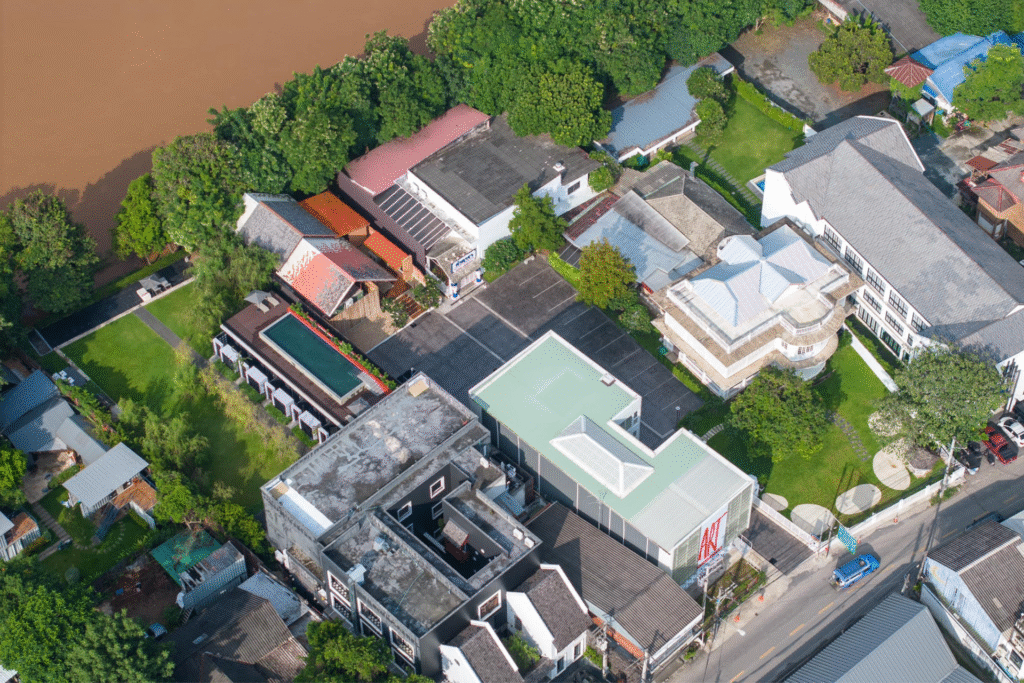Along the storied Charoenrat Road in Chiang Mai stands a white colonial-style building that has witnessed nearly a century of change. Built in 1936, Kunarak House carries a quiet elegance, a presence that speaks of both its architectural grace and the deep-rooted history of the Wat Ket community.

What was once a family home, designed for both function and beauty, now houses La Luna Gallery, a private art exhibition space that seamlessly blends past and present. Can you imagine wandering into a storybook where art and history come to life? Read along to uncover the timeless tale that breathes life into this artistic space.
Foundations of a Family Legacy
The story of Kunarak House begins with Mr. Yen and Mrs. Thong-in Kunarak, the visionary couple who embarked on its construction on April 21, 1934. With meticulous planning, they designed a two-story residence complete with a deck and attic—each space serving a purpose within the rhythms of daily life.
The attic, once a storage space for fine china and heirlooms, stood as a quiet keeper of the family’s legacy. The construction, overseen by Mr. Kee Chalayon, cost approximately 200,000 Baht—a significant investment in those days, reflecting the family’s aspirations and standing within the community.
As the decades passed, Kunarak House remained in the hands of the Kunarak family, each generation adding to its story. But like the river nearby, time flows onward—bringing change and opening the door for new visionaries to shape its future. This is where Sabine Zimpfer enters the story.
A New Chapter : A Space where art and history intertwine.
Today, Kunarak House embraces a renewed identity while gracefully preserving its intrinsic character. Through the visionary efforts of Sabine Zimpher, it has transformed into La Luna Gallery, a lively space for artistic expression from all walks of life worldwide.
“Some buildings are more than just walls and windows. They carry the weight of time, the echoes of conversations, and the quiet stories of those who once lived within them. Kunarak House is one of those places.”
River Art Venue
With meticulous restorations, the building has subtly withstood the challenges of time, floods, and humidity, standing as a testament to resilience. Despite these repairs, key historical features remain untouched, antique floor tiles with intricate patterns whisper stories of the past, while the old iron door safe stands as a silent guardian of bygone days.

Sabine’s mission is to honor the soul and history of the building, nurturing its heritage while opening new horizons for creative expression, allowing art to flow through its veins and breathe life into its timeless story.

Every exhibition held here is framed by the past, where each painting and sculpture stands in quiet conversation with the architecture surrounding them.
Kunarak House is more than a gallery; it is a union of different times. Visitors stepping inside are not merely observing art, they are immersed in history, surrounded by walls that have stood resilient for nearly a century.
The gallery has also compiled an archive of historical data about the Wat Ket community and Kunarak House itself, offering a resource for those eager to learn more about this unique intersection of art, history, and architecture.
A Living Tribute to Wat Ket
The presence of La Luna Gallery within Kunarak House is more than a transformation, it is a continuation of a narrative that began in 1936. Wat Ket, a district shaped by movement, commerce, and cultural exchange, has long been a place where the past informs the present.
Kunarak House, now part of River Art Venue, stands as a testament to this philosophy. It is a space where heritage meets creativity, where art breathes new life into old walls, and where every visitor becomes part of its evolving story.

What stories would these walls tell if they could speak? Perhaps they would recount the laughter of a family gathering in the sitting room, the hushed conversations of traders along the Ping River, or the hushed reverence of an artist setting up their latest exhibition.
The legacy of Kunarak House is that its history is still being written—one visitor, one artist, one moment at a time.
